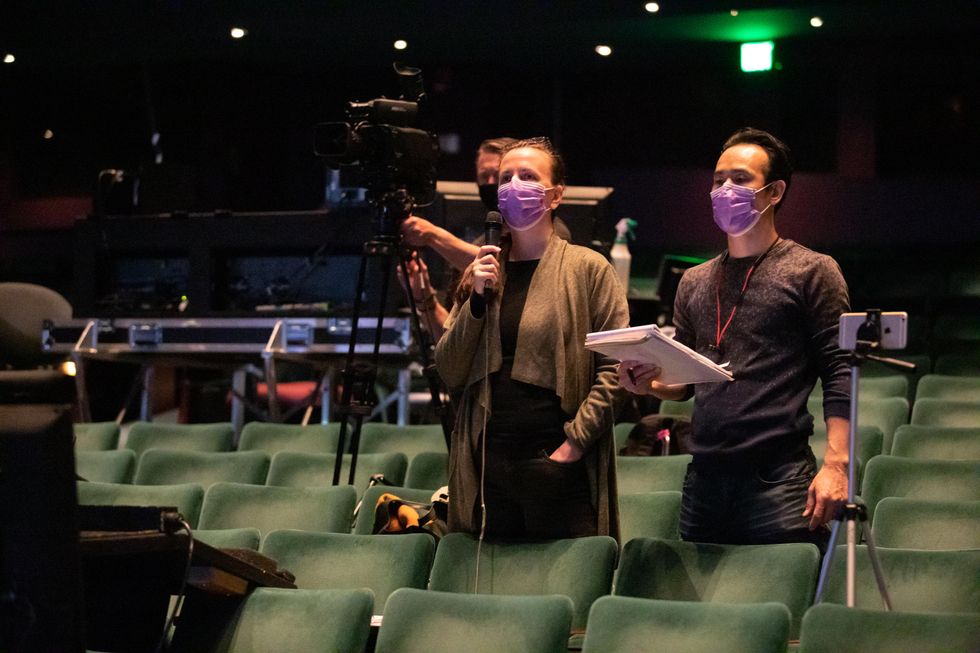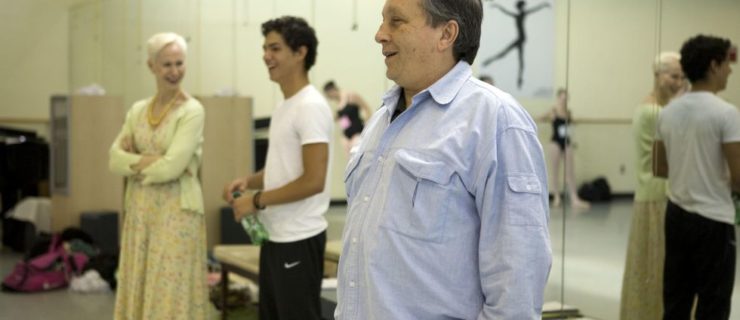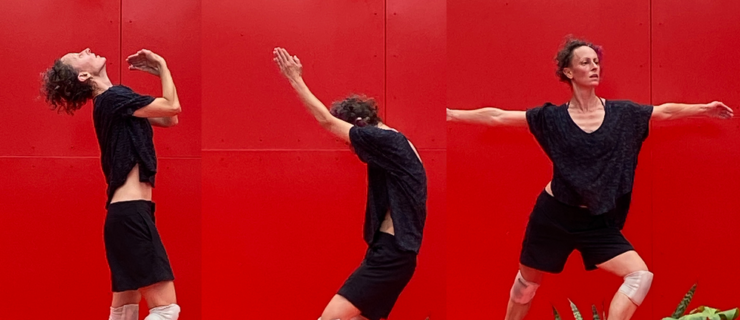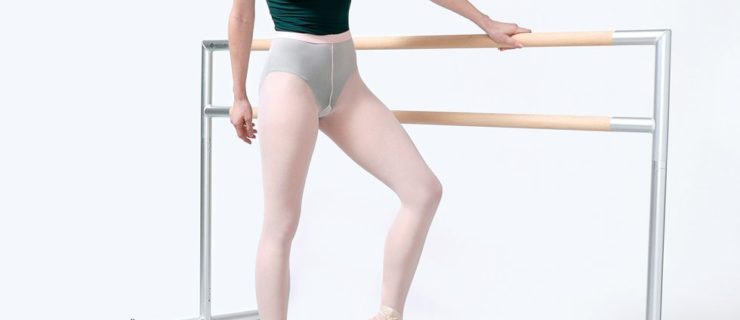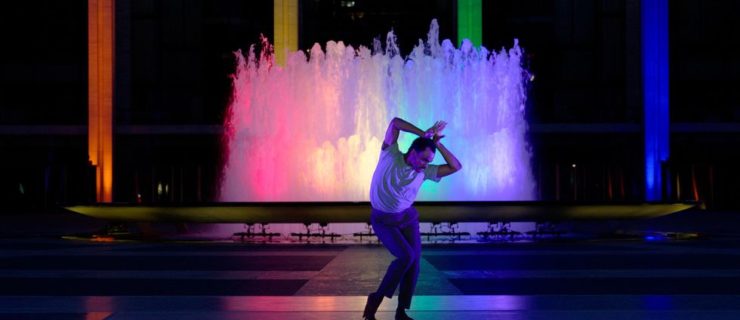One Strategy For Creating Dance During a Pandemic? Digital Now, Live Later
Each time Pacific Northwest Ballet artistic director Peter Boal called choreographer Jessica Lang last year, he worried that she would slam down the phone. If Lang had chosen to abandon her commission to create an onstage ballet during the pandemic, he says, he wouldn’t have blamed her.
Every call came with a new COVID-19–related restriction: Reducing her number of dancers. Limiting in-studio collaborators. Outlawing partnering unless dancers were co-habitating. Forbidding half the dancers from exiting stage right. “I can’t believe she didn’t hang up on me,” Boal recalls thinking.
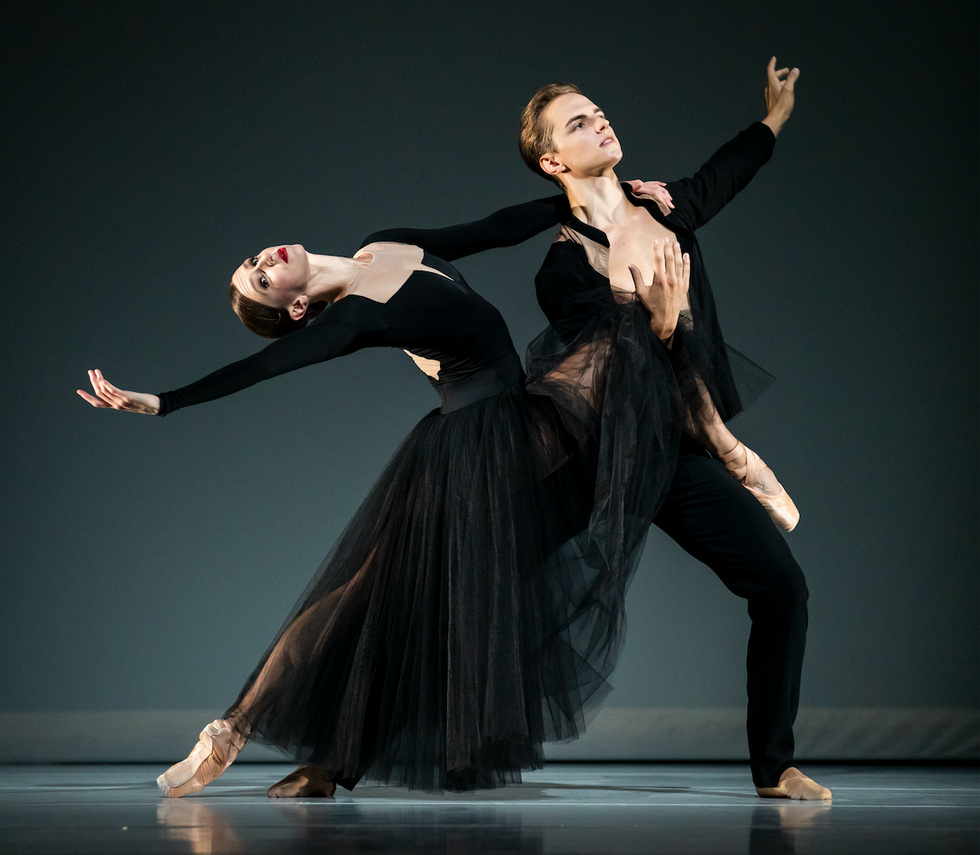
Ghost Variations Lindsay Thomas, Courtesy PNB
From its evocative title to its ethereal sets to the final film execution, Lang’s Ghost Variations explores the fear of losing touch with earthly reality. Set to Robert Schumann’s final piano work, with additional music by his widow, Clara, the ballet features two “pods” of four dancers who perform both in front of and behind a dropped scrim. At times they grasp at each other’s silhouettes, but the shadow play is no gimmick: This is social distancing in disguise. Only one man and woman (an offstage couple) actually partner.
“I wanted to make a piece that didn’t look like it was made during the pandemic,” Lang says. “I’m so proud of this ballet.”
Ghost Variations
will continue haunting stages long after the coronavirus is vaccinated away. That’s because PNB opted for an all-digital 2020–21 season, honoring its commissions from Lang, Donald Byrd, Alejandro Cerrudo, Edwaard Liang and Christopher Wheeldon by filming premieres that they hope will be performed live in later seasons. For patrons, the message is “Stream the new dances now, see them live onstage once public health guidelines allow.”
Other dance organizations have also embraced the “video now/live later” model after experimenting with programming options, or because they set out to commission a piece, not knowing what the final form would be. The strategy allows organizations to offer work at a time when so many artists are struggling with canceled contracts, and potentially set themselves up for lower-than-usual programming costs in coming seasons when audiences can come back to theaters.
The format is resonating. In November, more than 4,000 households paid to stream a PNB program that included Ghost Variations, a new work by Penny Saunders and pieces by Susan Marshall and Twyla Tharp. A month later, The Nutcracker logged more than 10,000 views from all 50 states and 24 countries. (Although Boal is quick to deadpan, “It’s just my mother in Vermont.”)
Per-household tickets started at $39 for The Nutcracker and at $29 for the other programs, which helps pay the salaries of the dancers, all of whom are on reduced contracts this year. To Boal, the wide geographic range of viewers indicates that PNB should work with its affiliated unions to continue streams in the future and increase accessibility.
Karen Reedy, director of the George Mason University School of Dance, ended up with a double-duty dance from choreographer Hope Boykin almost by accident. When Reedy hired Boykin in July, her focus was simply on giving her students the experience of making work with the recently retired Alvin Ailey American Dance Theater star; the vagaries of COVID-19 regulations would eventually determine how the work could be presented.
“There are artists who are not suited to these kinds of challenges,” Reedy says. “Hope jumped right in.”
Thanks to a “window wall” technology developed at George Mason, Boykin appeared in the studios as a larger-than-life-sized figure projected onto a giant screen. She choreographed from home in New York City, with assistant Martina Viadana also working from home, while in Fairfax, Virginia, graduate student Robert Kleinendorst (a former member of Paul Taylor Dance Company) served as Boykin’s rehearsal director.
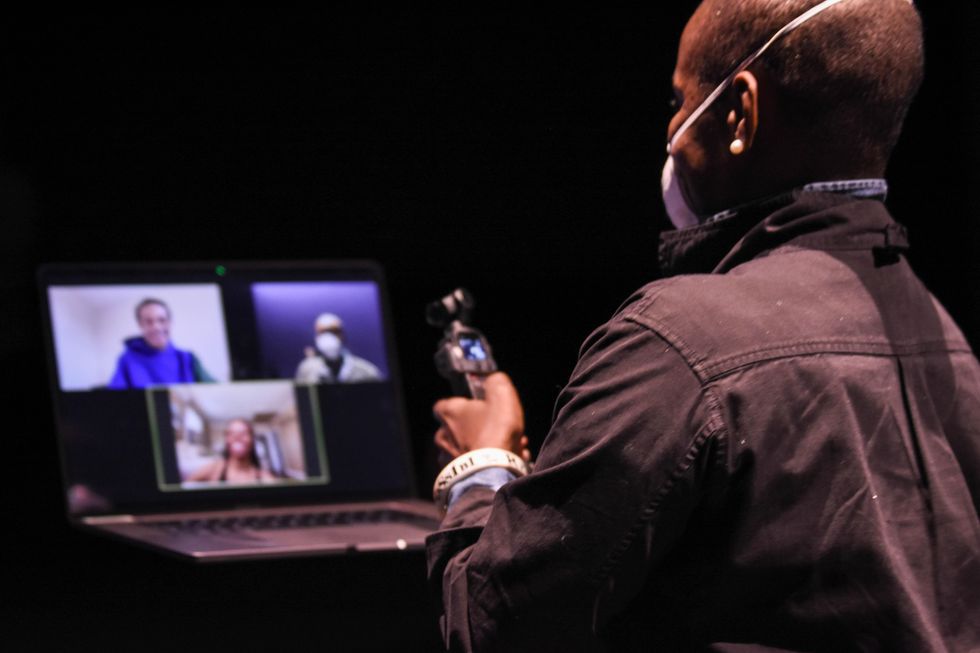
Hope Spears, Courtesy Boykin
“Rob was like an uncle to the students, and to the dance,” Boykin says. At one point, there was a specific slide that she could not demonstrate from home, and she relied on Kleinendorst to complete the movement. (“Rob! Make them slide like Ruthie [Ruth Andrien] in Esplanade,” Boykin told him.)
Students sent Boykin and her team (including collaborating editor Terri Ayanna Wright) hours of footage. They danced her choreography alone at home, in the studios, outside and onstage, which was all edited down to around 30 minutes of movement. Running To and Toward: A Dance Film by Hope Boykin streamed for free via George Mason’s website in December.
When the 2020–21 school year began, Reedy hoped her students could eventually perform for an audience for George Mason’s March gala. By January, it was clear that wouldn’t be possible. Reedy and Boykin stuck with an onstage version of Running To and Toward, however, as part of a streamed gala.
Boykin treated adapting her choreography from screen to stage as a lesson in versatility. “While making works for stage, I used to say, ‘If this were a movie moment…’ Now I say, ‘When we’re back onstage…’ ” Boykin says. “I believe that is what has and will continue to allow me to work in both ways, with an open sensibility.”
Creating dance films as preludes for future onstage performances has also been central to the “bubble residencies” launched by Works & Process at the Guggenheim and Lincoln Center.
“We wanted to create short, fun pieces that you dip in and out of,” says Caroline Cronson, the producer of Works & Process. But she never envisioned that its YouTube channel would become such a hot destination for pandemic dance videos. “Our real love is commissioning works for our space,” she says. “We are first and foremost a performing arts organization.”
From its home base in New York City’s Guggenheim Museum, Works & Process typically presents sneak-peak performances and site-specific works. Yet early in the pandemic, the dance presenter quickly earmarked $40,000 for commissioning short videos. Boykin, Joshua Bergasse, Sara Mearns and Andrea Miller were among the first artists to earn $500 creating five-minute videos for the program’s YouTube channel. The venue has since paid more than 350 artists.
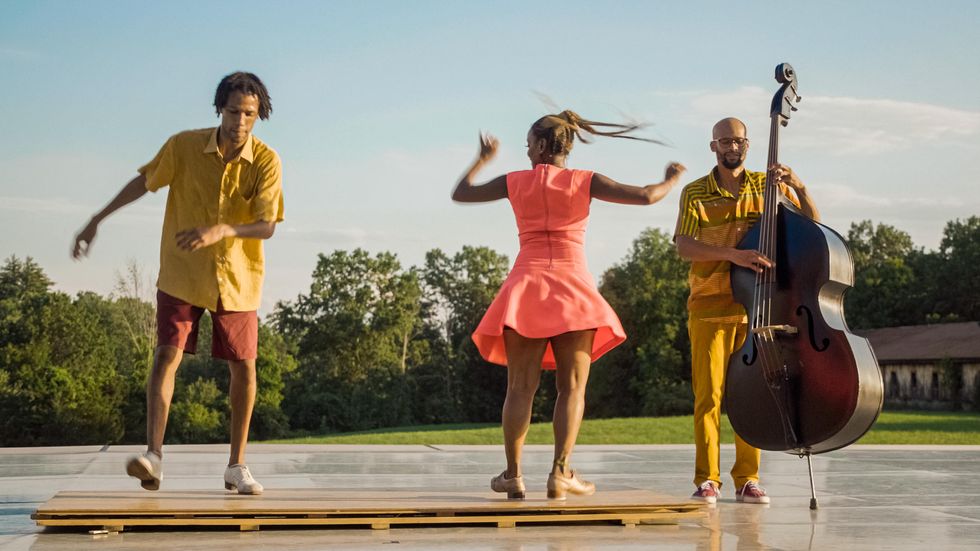
Dancing Camera, Courtesy Works & Process
“This was a knee-jerk reaction, this whole initiative,” general manager Duke Dang says. “We said, ‘We are going to commission artists right now, and we are going to pay them.’ ”
Once it became clear that live performances would be canceled far into 2021, however, Cronson and Dang began investing in projects that paid artists to create work now that could premiere in person in the future. Artists live together in bubble residencies, creating a short film on the final day. Some of the results stand alone as site-specific clips using the same choreographic language as the eventual live work, such as Ephrat Asherie Dance’s colorful romp around the Lincoln Center plaza in UnderScored. Others, such as Music From The Sole’s tap/jazz collaboration, are clearly one movement of a longer piece that should come to fruition by 2022.
“The video itself is like a teaser,” Dang says.
Thanks to a $500,000 influx in funding from the Andrew W. Mellon Foundation, an additional 12 bubble residencies will take place in 2021. Like other presenters following this two-pronged model, Dang and Cronson hope the videos will whet the appetites of dance fans eager to get vaccinated and back inside a performance hall.
